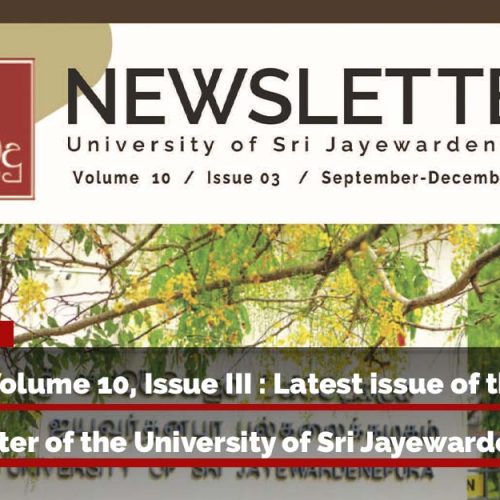
What is Agarwood?
Agarwood is a highly fragrant and very valuable resin produced in the stems, branches and roots of certain tree species of family Thymelaeaceae. Agarwood is believed to be the most expensive wood in the world because of resinous fragrant heartwood. The main species are scientifically known as Aquilaira, Gyrinops, Aetoxylon and Gonystylus. Among those four genera, the first two are the most popular ones in the market. Agarwood is not naturally produced inside the trees and it is produced only as a result of a first line of a defence mechanism of the tree to prevent entering intruders such as fungi, bacteria into the stem.
Agarwood producing species are distributed from Assam of India to Papua New Guinea. Among those countries, Thailand, Vietnam, Lao PDR, Malaysia, Indonesia, Papua New Guinea are famous in producing agarwood in large scales to the intentional market.
Uses of Agarwood

The use of agarwood for perfume production extends back several thousands of years, and is referenced, for example, in the Old Testament several times using the term ‘aloes’. The resin is highly sought after for religious, medical, ceremonial and domestic activities by Asian Buddhists and Moslems. In addition to that, a large demand is seen for agarwood in Southeast Asia, Middle East and United States as a perfumery agent. The extreme value of the agarwood resin depends on the oleoresin content of the wood. For instance, first grade agarwood is one of the most expensive natural raw materials in the world, with prices in consumer countries ranging from a few dollars per kg for low quality material to more than US$ 30,000 per kg for top quality wood. Agarwood oil also fetches similarly high prices.
Agarwood and Walla patta in Sri Lanka

Walla patta, scientifically known as Gyrinops walla was a tree which had no commercial value a few years back suddenly came under the spot light in Sri Lanka due to frequent effort on smuggling out of the country. The reason of smuggling was believed to be the resinous tissue called agarwood which is produced inside the stem of this particular tree.
Aquilaria trees are native to Asia from northern India to Vietnam and Indonesia. However, none of the species of the Aquilaria genus has been recorded in Sri Lanka. Walla patta is the only member present in Sri Lanka of the genus Gyrinops. There are strong reasons to believe that Walla patta is endemic to Sri Lanka, mainly because evidences are not available on its presence of other countries.
Walla patta is a medium-tall tree which grows up to 15 m in height with straight, slender trunk with a small, rounded crown. It bears a thin, brownish-grey bark which is smooth and strongly fibrous. Therefore its bark is used as a binding material by the villagers. Twigs are slender and wiry, rather shining and chestnut-brown in colour when young. Leaves are oblong and 3.0-9.0 cm x 1.2-5.0 cm with a short, rather abrupt, bluntish acumen up to 1 cm long. Inflorescence is terminal or few flowered with umbel-like heads. Flowers are yellowish-white and the size of the calyx tube is 4-10 mm which is narrow.
Illegal harvesting of Walla patta
Catching the smugglers of Walla patta has become a frequent event in Sri Lanka and it has been given a huge publicity by both electronic and printed media since 2012. Unfortunately, the facts given in most of such media articles are very much misleading and forcing the poor people to cut the trees for nothing. However, thus publicity increased the awareness which cause an immense destruction of this valuable resource.
Agarwood oil production
Various techniques are used for agarwood oil extraction such as hydro-distillation, solvent extraction, and supercritical fluid extraction. Each technique has advantages and disadvantages. The classical method that is currently used in commerce for the agarwood oil extraction is hydro-distillation. This method consumes 7-10 days and high energy for extraction. The supercritical fluid carbon dioxide extraction is known as non-flammable, non-toxic, chemically stable and less energy consumption method. It provides some advantages over classical method, since super critical carbon dioxide has low viscosity, high diffusivity, good transport properties and gives faster extraction and high yields.
Present situation of agarwood producing species
International demand for agarwood is increasing and over the past decade it has resulted in over-exploitation in all agarwood producing countries. Poaching increases tree mortality, reduces the growth rate of pre-adults and adults, and decreases the percentage of adults that reproduce. Loss of lowland forest habitats also threatens populations of these species. Agarwood producing species are becoming more difficult to find, as reported by collectors, non-infected trees are increasingly being felled and collection is taking place within protected areas.
This over-use of agarwood producing species has therefore seriously affected the natural resources of all Aquilaria and Gyrinops species capable of producing agarwood, thus making these endangered species listed in Appendix II of the Convention on Internal Trade in Endangered Species of Wild Fauna and Flora (CITES) since 2004.
However, it is encouraging to see the trend of establishment of plantations for the commercial benefits especially using various species of Aquilaria in many countries of the Asia.
Research conducted by the Forest Management Group of University of Sri Jayewardenepura

Forest Management Group at Department of Forestry and Environment Science of University of Sri Jayewardeneura headed by Dr. Upul Subasinghe started conducting research on agarwood formation in Walla patta for the first time in the history. They were able to scientifically prove the quality of naturally formed Walla patta to that is commercially produced by Aquilaria species. Upon the success of those findings, National Research Council of Sri Lanka and Sadaharitha Plantations Limited funded them with Rs. 11.6 million to conduct further research on several aspects of commercialisation of Walla patta which was collaborated with Dr. Dhanushka Hettiarachchi, Senior Scientist of Wescorp Group of Companies, Australia. Identification of the resin differences, most suitable areas for plantation development, best nursery practices, differences of traditional agarwood resin inducement techniques used in South Asian countries are some of the objectives of the above mentioned project and the results were very promising. In addition, several other research projects were conducted to identify the most suitable biological methods of agarwood resin inducement in Walla patta with the collaboration of Department of Botany of the same university and Sri Lanka Rubber Research Institute. The findings were published in reputed international journal and conferences of Sri Lanka, Malaysia and Taiwan.
Read More:
Non Timber Forest Products Manufacturing and Marketing with Special Reference to Aromatic Oils
Dr Subasinghe explains How to create perfect agarwood from Wallapatta
Research Paper: Agarwood-type Resin from Gyrinops walla Gaertn: A New Discovery
Research Paper: Agarwood Production in Gyrinops walla (Walla patta) Myths and Reality
Watch Video
 Dr. Upul Subasinghe
Dr. Upul Subasinghe
Senior Lecturer
Department of Forestry and Environmental Science,
Faculty of Applied Sciences
University of Sri Jayewardenepura, Sri Lanka










